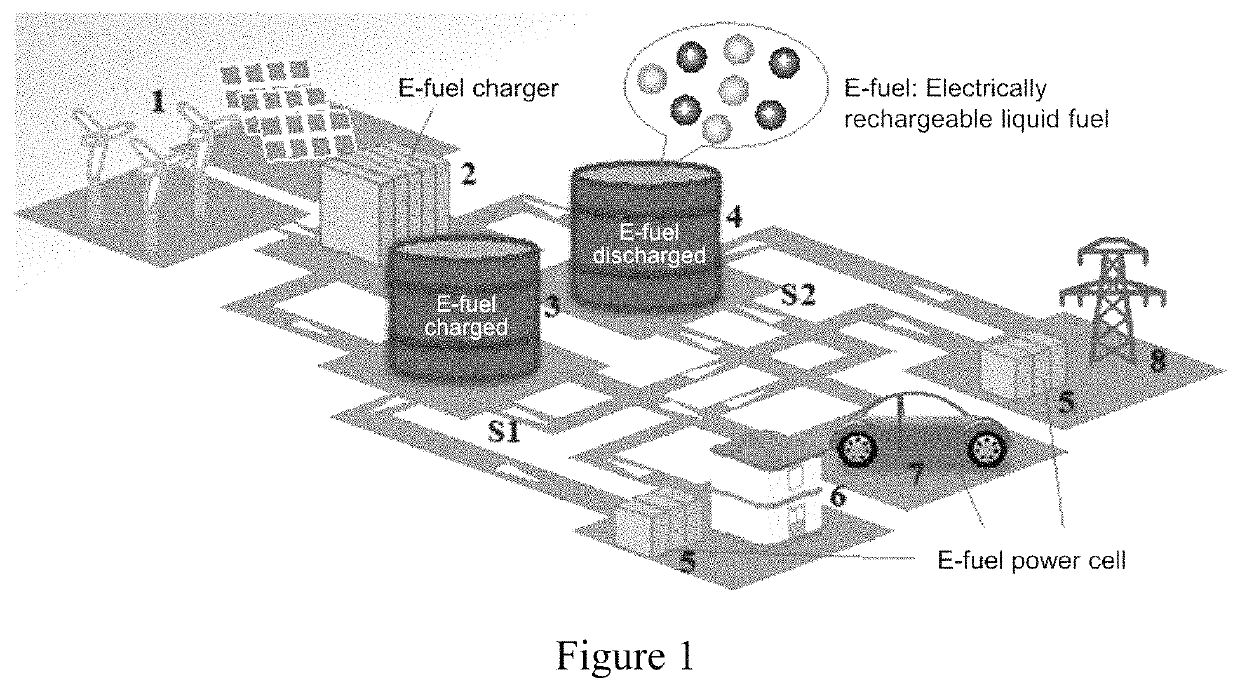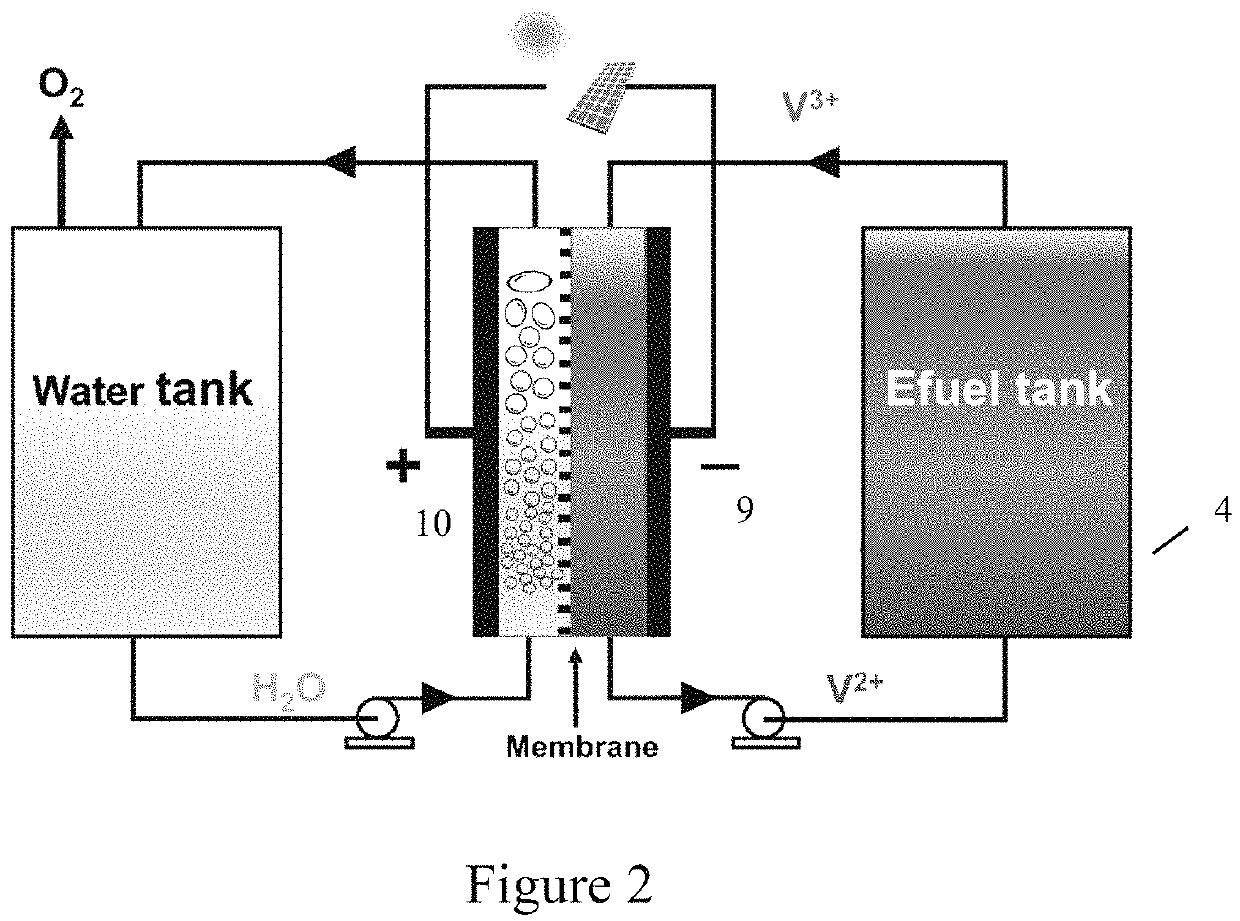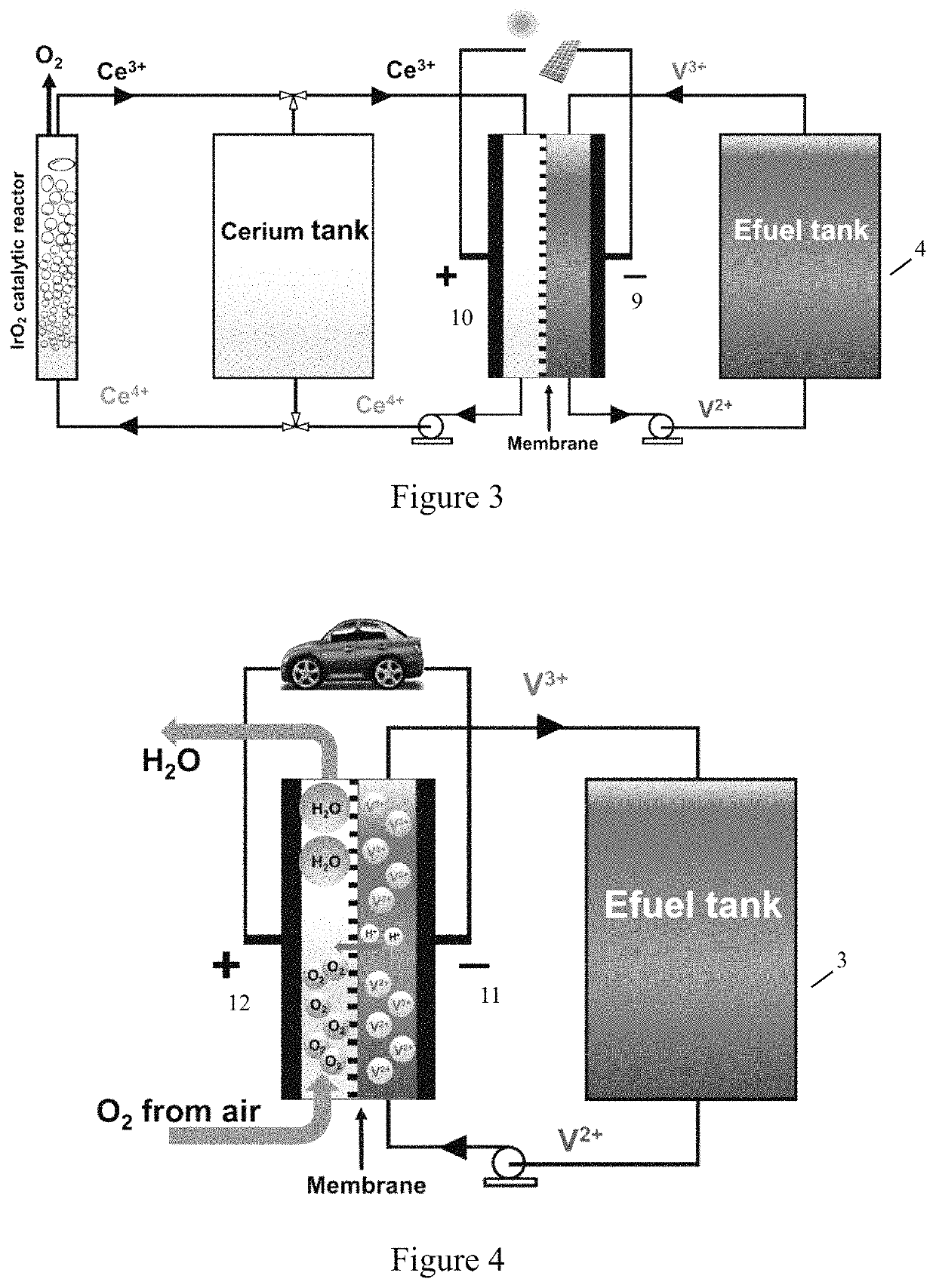Electro-fuel energy storage system and method
a technology of energy storage system and electro-fuel, which is applied in the direction of fuel cells, electrochemical generators, cell components, etc., can solve the problems of poor scalability, implementation of large-scale energy storage applications, and intermittent electricity generated from these power sources, and achieves convenient storage and transportation, high flexibility in selecting, and easy integration with the grid
- Summary
- Abstract
- Description
- Claims
- Application Information
AI Technical Summary
Benefits of technology
Problems solved by technology
Method used
Image
Examples
Embodiment Construction
[0027]In order to facilitate the understanding of this invention, the present invention will be described more comprehensively. However, the invention can be embodied in many different forms and is not limited to the examples described herein. Rather, these examples provided the aim to make a more thorough and comprehensive understanding of this invention.
[0028]Unless defined, all technical and scientific terms used herein have the same meaning as commonly understood by one of ordinary skills in the art to which this invention belongs. The terminology used in the description of the present invention is to describe particular examples and is not intended to limit the invention. The term “and / or” as used herein includes any and all combinations of one or more of the associated listed items.
[0029]The e-fuel energy storage system and methods of this invention comprise an electroactive liquid fuel (e-fuel) which can be charged and discharged repeatedly. The electric energy generated by t...
PUM
| Property | Measurement | Unit |
|---|---|---|
| operating temperature | aaaaa | aaaaa |
| energy density | aaaaa | aaaaa |
| thickness | aaaaa | aaaaa |
Abstract
Description
Claims
Application Information
 Login to View More
Login to View More - R&D
- Intellectual Property
- Life Sciences
- Materials
- Tech Scout
- Unparalleled Data Quality
- Higher Quality Content
- 60% Fewer Hallucinations
Browse by: Latest US Patents, China's latest patents, Technical Efficacy Thesaurus, Application Domain, Technology Topic, Popular Technical Reports.
© 2025 PatSnap. All rights reserved.Legal|Privacy policy|Modern Slavery Act Transparency Statement|Sitemap|About US| Contact US: help@patsnap.com



